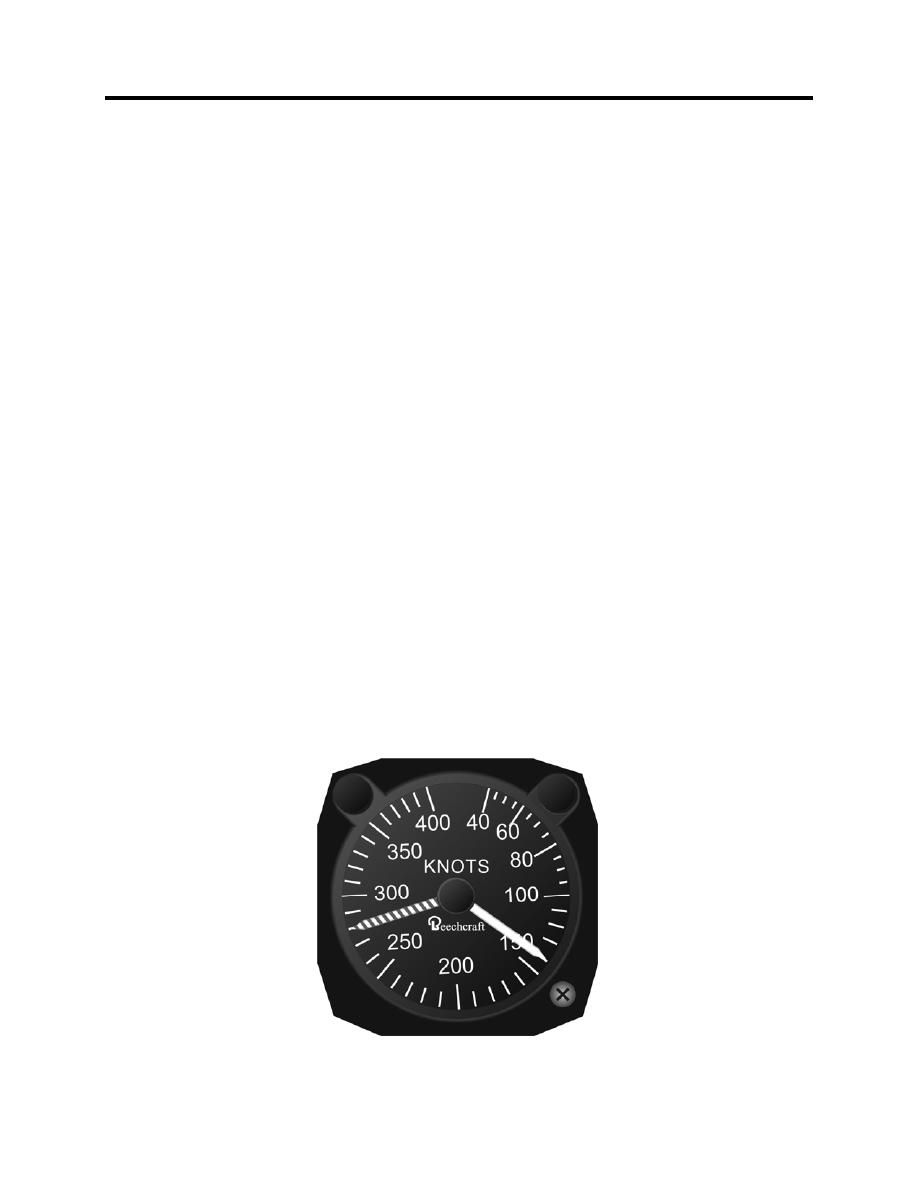 |
|||
|
|
|||
|
|
|||
| ||||||||||
|
|  CHAPTER FOURTEEN
T-34C SYSTEMS FAMILIARIZATION
WORKBOOK
1402. PITOT STATIC SYSTEM
The pitot and static pressure systems supply pitot (impact) air pressure and atmospheric (static)
pressure to various instruments and components.
Pitot
An electrically heated pitot tube on the leading edge of the left wing supplies pitot pressure to the
airspeed indicators in both cockpits. The heating element is powered by 28 VDC, is activated by
a switch in the front cockpit, aft end of right console and is used to prevent airflow restriction
under icing conditions. Caution should be used if it is necessary to touch the pitot as burn injury
potential exists. Pitot heat should not be used on the ground except immediately prior to takeoff
as required. Overheating due to lack of cooling airflow will damage the unit.
Static
Static ports on the left and right sides of the aft fuselage supply static or atmospheric pressure.
Pressure from the static ports is transmitted to the airspeed indicators, altimeters, and vertical
speed indicators.
Alternate Static Air Source
An alternate static air source is available for the front cockpit static instruments only and is
designed to provide a source of static pressure to the instruments from inside the fuselage should
the outside static air ports become blocked. A guarded switch in the front cockpit below the
parking brake handle allows the pilot to select either NORMAL or ALTERNATE static air.
Airspeed Indicator
Two airspeed indicators are provided, one on each instrument panel. They are pitot static
instruments and are calibrated to show indicated airspeed from 40 to 400 kias. In addition, a
maximum allowable airspeed (MAAS) pointer continuously indicates the maximum allowable
airspeed.
Figure 14-1 Airspeed Indicator
14-2
PITOT STATIC SYSTEM
|
|
Privacy Statement - Press Release - Copyright Information. - Contact Us |